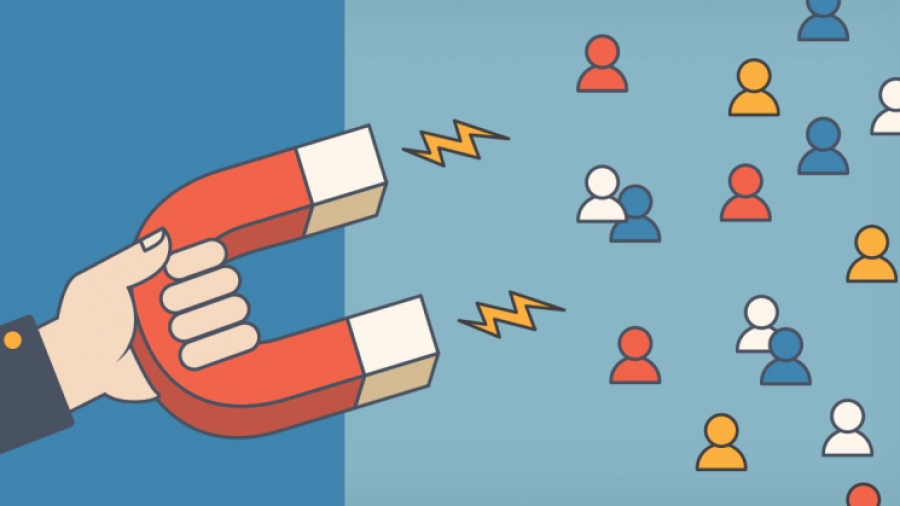Should estate planning attorney’s start blogging on their website? What are the benefits of blogging? Learn whether this marketing tactic is worthwhile pursuing when running a profitable law firm.
Use Your Maintenance Program to Generate Additional Revenue Through Advertising

A members–only section on your website can allow enrollees in your maintenance program to sign up for exclusive events, download videos of workshops they might have missed, and more. It also allows you to generate revenue through advertising (as does your newsletter). How? By offering companies that provide services of interest to your clients the opportunity to advertise on this portion of your site. House cleaners, estate sale firms, delivery services, caregivers… service providers like these and many more will pay handsomely for access to a targeted demographic. So, too, will financial advisors, accountants, attorneys who practice in areas outside of your own, and other professionals.
Of course, you must screen potential advertisers carefully to make sure they are good at what they do and worthy of your clients’ trust. Also, don’t run too many ads. Enrollees in your maintenance program will appreciate exclusive access to companies that provide services they need and can trust. However, you don’t want to leave the impression that generating advertising revenue is the only reason you offer a newsletter or a members-only section on your website.
Start 2020 Off Right by Kick-Starting Your Maintenance Program
From mid-November through the beginning of January, Lawyers with Purpose members tend to see a decrease of initial contacts, initial meetings, and workshop attendance. The holidays are THE time for your prospects and clients to be thinking about AND discussing their future plans with family, however, not as many do. How can you remedy this? By kicking off your maintenance program!
Marketing to the Sandwich Generation: Produce a TV or Radio Ad
 Television and radio ads are proven tactics to build widespread awareness of your name and firm throughout your community. If you are already using the “Ask” campaign, it will be relatively easy to produce a new ad incorporating a message about the challenges faced by the sandwich generation. Such an ad will allow you to position yourself as the industry leader to this growing demographic. As for content, repurposing the article we mentioned in an earlier post might be all you need.
Television and radio ads are proven tactics to build widespread awareness of your name and firm throughout your community. If you are already using the “Ask” campaign, it will be relatively easy to produce a new ad incorporating a message about the challenges faced by the sandwich generation. Such an ad will allow you to position yourself as the industry leader to this growing demographic. As for content, repurposing the article we mentioned in an earlier post might be all you need.
TV and radio aren’t for everyone. If you live in a large, heavily populated market, TV might be cost prohibitive, although radio could be affordable. But don’t write these tactics off before contacting local media outlets to get a quote. You may be pleasantly surprised at how economical it is to reach a widespread audience.
Marketing to the Sandwich Generation: Sponsor an Event
We all have an organization or cause that is special to our hearts. Supporting your favorite charitable organization not only helps those in need and makes you feel good, it can also position your firm as a caring member of the community—thereby enhancing your brand.
Don’t just write a check. Try sponsoring an event, or at the very least participate in one. In this case, you’ll want to choose an event that has something to do with an issue relevant to the sandwich generation… an event for seniors, perhaps, or caregivers. You can find potential sponsorship opportunities in your local paper or online. If you can’t find any suitable events, you can create one yourself.
Once you have sponsored or created an event, be sure to publicize it. Don’t forget to mention your participation in, or sponsorship of, the event. Write an article about it, take pictures, and send them to the local newspaper. You’ll want to post the article on your website as well as on social media, and include it in your newsletter if you have one.
Marketing to the Sandwich Generation: Create a Lead Magnet
 In the world of digital marketing, the most coveted piece of prospect information is an email address. The question is, how can you convince visitors to your website to provide you with their email addresses? The answer: a lead magnet.
In the world of digital marketing, the most coveted piece of prospect information is an email address. The question is, how can you convince visitors to your website to provide you with their email addresses? The answer: a lead magnet.
A lead magnet is a free offer or incentive, typically a valuable piece of information, such as a special report or booklet. In essence, you are providing this free information in exchange for the prospect’s email address. You may have the preconceived notion that lead magnets must incorporate massive quantities of content, but that’s not necessarily true. Short downloads can be just as effective at collecting leads as 50-page white papers.
Of course, your lead magnet must be something that many prospects will want. Given the sandwich generation’s growth and its need for planning solutions, a lead magnet focusing on long-term care planning, Medicaid crisis planning and the like should help you capture plenty of leads.
Marketing to the Sandwich Generation: Host a Picnic or Hold a Seminar
Host a Picnic
 A picnic (with sandwiches on the menu) offers a great opportunity to market your firm to the sandwich generation. You’ll want to invite your existing clients—and have them invite friends and family—together with prospects in your data base. The informal atmosphere of a picnic should make everyone feel comfortable, willing to share their personal stories and greatest concerns. Meanwhile, you’ll have the opportunity to talk about ways to address those concerns through proper planning.
A picnic (with sandwiches on the menu) offers a great opportunity to market your firm to the sandwich generation. You’ll want to invite your existing clients—and have them invite friends and family—together with prospects in your data base. The informal atmosphere of a picnic should make everyone feel comfortable, willing to share their personal stories and greatest concerns. Meanwhile, you’ll have the opportunity to talk about ways to address those concerns through proper planning.
Hold a Seminar
Seminars are still one of the most popular, and effective, ways to market legal services to the public. While more formal than a picnic, you will be able to make an actual presentation. Content for your presentation can be created by tweaking one of your current PowerPoints to focus on issues important to the sandwich generation, or by making a short PowerPoint from scratch that focuses exclusively on long-term care planning, Medicaid planning, advance directives, and other topics members of the sandwich generation will find compelling. What should you serve at the seminar? Yes, we highly recommend sandwiches.
Marketing to the Sandwich Generation: Write an Article—and Make the Most of It
 Writing a single article about the sandwich generation will allow you to use multiple platforms to get the word out about your firm and how you can address the challenges faced by the sandwich generation. You can use your article for:
Writing a single article about the sandwich generation will allow you to use multiple platforms to get the word out about your firm and how you can address the challenges faced by the sandwich generation. You can use your article for:
- Blogs
- Social media posts
- Your newsletter
- Emails
- A press release
What should you say in your article? You want to begin by defining the term sandwich generation, then discuss the challenges faced by this demographic. After that, tell the reader how your firm can address these challenges. You’ll want to close with a “call to action,” inviting the reader to visit your website or contact your firm for a consultation. You don’t have to write a tome here, maybe just 400 words or so. (Of course, if you love to write, you can make your article as long and informative as you want.)
Here’s another tip: You can repurpose your article’s content to produce a video, which you can then post on your website’s landing page. Videos posted on landing pages have been shown to increase conversion rates by as much as 80 percent. A video that focuses on an important topic like the planning needs of the sandwich generation could produce even better results.
Here’s How to Market Your Services to the Sandwich Generation
 The term sandwich generation refers to people who are raising their own children while simultaneously trying to care for aging parents. In essence, they are “sandwiched” between these two roles, each of which is demanding in its own right.
The term sandwich generation refers to people who are raising their own children while simultaneously trying to care for aging parents. In essence, they are “sandwiched” between these two roles, each of which is demanding in its own right.
Perhaps you are a member of this generation and have first-hand experience juggling the two roles yourself? If so, you are not alone. It is estimated that 47 percent of adults in their 40s and 50s who have a parent 65 or older are also raising a youngster or supporting a grown child. In fact, one in seven of these adults are financially assisting both their parents and one or more children.
This demographic is growing and in need of the services you provide: long-term care planning, Medicaid crisis planning, advance directives, wills, trusts, and more. The question is, how do you reach them with the message that you have the planning solutions they so desperately need?
In the coming days, we’ll provide you with a variety of proven marketing tactics to reach these folks. Check back Thursday for a tactic that’s easy, quick, economical, and can be used a across multiple platforms.
Introducing June 2019 Member of the Month, Jenny Rivard
Located in Manchester, New Hampshire and serving all of New Hampshire and Massachusetts, American Wealth Protection has been an LWP member since the fall of 2017. Owner and Founder Jenny Rivard began her legal career at just 14 years old when she worked typing documents and answering phones for the estate planning law firm where her mother worked. After several years at that firm, she knew that she wanted to become an estate planning and elder law attorney. She avidly pursued her career, obtaining her undergraduate degree in just 3 years, and in 2009, became the second youngest person to have passed the bar in the state of New Hampshire. After a brief stint at another firm, she created her own a year later, and went on to innovate by being the only firm in her market to include financial planning among her firm’s offerings, providing seamless service to her clients. Today, Jenny and her husband, Patrick, who is also an attorney and plays a key business development role at AWP, are focused not only on growing their business but also parenting their four beautiful children.
LWP sat down with Jenny Rivard to talk about her firm and the changes it’s experienced since becoming a member.
What brought you to LWP?
About six years ago, I had a client who came to see me because she needed a plan. She had Alzheimers and could no longer do math, but prior to this, she had been a physicist! We prepared all the standard documents, but she needed more. “Who will help with the day-to-day things, like bathing? What checkbook should my son use when he needs to take over the finances?” were among her many concerns. I realized that despite having a lot of tools, in order to provide a real plan, I needed more. I decided to get involved with Medicaid planning, and when I searched online for training, I found LWP.
I knew I needed the Medicaid software, so I attended Practice With Purpose, and I joined LWP right then. I’ve been a platinum member for two years.
How tightly do you follow LWP’s systems and processes?
My firm definitely speaks the LWP language, but we’re a unique firm, so despite my strong inclination to want to follow the systems as strictly as possible and not change the workflows, I realized that my firm simply didn’t fit perfectly in the category. We wanted one system that could handle all of the services we offer, including financial planning and insurance, while keeping all the notes for every file together. There are confidentiality issues that get quite complex with that, so, we’ve had to adapt LWP’s systems to fit.
What is the greatest success you’ve had since you fully engaged with LWP?
We’re on the brink of doubling our revenue within about a year to 18 months, but even so, I’d say that the biggest success was being able to see the 10,000-foot view so we could see what was to come next. Before LWP, I’d done pretty well on my own, but I was working in the business. Since joining LWP, we’ve gone from being a one-person to a five-person firm. That was due to the coaching—the ability to get to the next steps that I couldn’t have achieved on my own. Hands down, for me, the most valuable part of LWP has been the coaching with Mandy and Candace. They help us stay focused and spent a good deal of time helping us tweak the software to fit our model.
To what, specifically, do you attribute your revenue growth?
It’s the coaching…more so than anything else. I was too “in it” to see the 10,000-foot view of what was to come next. My LWP coaches got me out of that. I don’t think I would’ve gotten to this place without that coaching.
What do you believe sets American Wealth Protection apart from your competition?
Our unique model sets us apart. It’s the fact that we have the financial advisors on staff, and we do both legal and financial seminars. While we do have clients that have their own advisors, often times, they’re in separate buildings and not always on the same page in regard to the client’s needs. Our model offers a more integrated approach. Also, our approach to financial planning is to plan for the worst-case scenario. We assume the highest inflation and taxes, and from that, we figure out how long our clients’ income will last. Once that scenario has been created, we see what’s left to protect, which takes us into estate planning. I think our model is pretty unique right now, but people will probably migrate to it over time. A lot of attorneys think they need to bring someone in house, but in my case, I had both the legal and the financial planning licenses.
What is your marketing model?
I have over 2,000 clients I’ve gathered in the last 9 years, so we get a lot of client referrals. Other than that, there are a few referrals from other places, and of course, we do the workshops. We would like to start more traditional advertising, but we’re not doing it yet. For now, we’re continuing to work on our infrastructure.
Do you attend LWP’s TAPER events, and if so, what wowed you there?
We attend one TAPER per year, and the IMQ (In Marriage QDRO®) presentation was amazing. But, our firm’s TAPER “aha” moment is really just that it keeps us centered and moving in the same direction, and we really need that by October of each year.
What is your favorite LWP tool? It’s a tie between the dashboard and the Medicaid software. The dashboard is an easy way to see what happened all month—what we should have earned vs. what we actually collected.
What kinds of changes, if any, are you currently seeing in your market?
In our market, we’re seeing a trend among widows whose husbands had handled the finances. They’ve suddenly found themselves in a situation in which they don’t know who to call. There’s an unmet need there.
FUN FACTS:
Share something about yourself that most people don’t know about you.
I’m a “little old lady at heart.” I really enjoy crossword puzzles and jigsaw puzzles. I grew up on a farm, so now I can my own vegetables, and I love all kinds of outdoor activities, like fishing.
What is your favorite book, and how did it impact your life?
I love to read. The book that taught me how to adapt my personality to that of the person with whom I’m speaking so we’re connected was Jeffrey Fox’s Rainmaker. It has nothing to with law at all. It’s super small, easy read, and the reason I could bring in business. I found it when I was starting my own firm and googling every sales book I could to try to figure things out.











